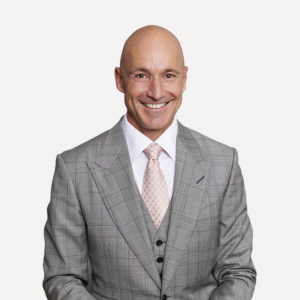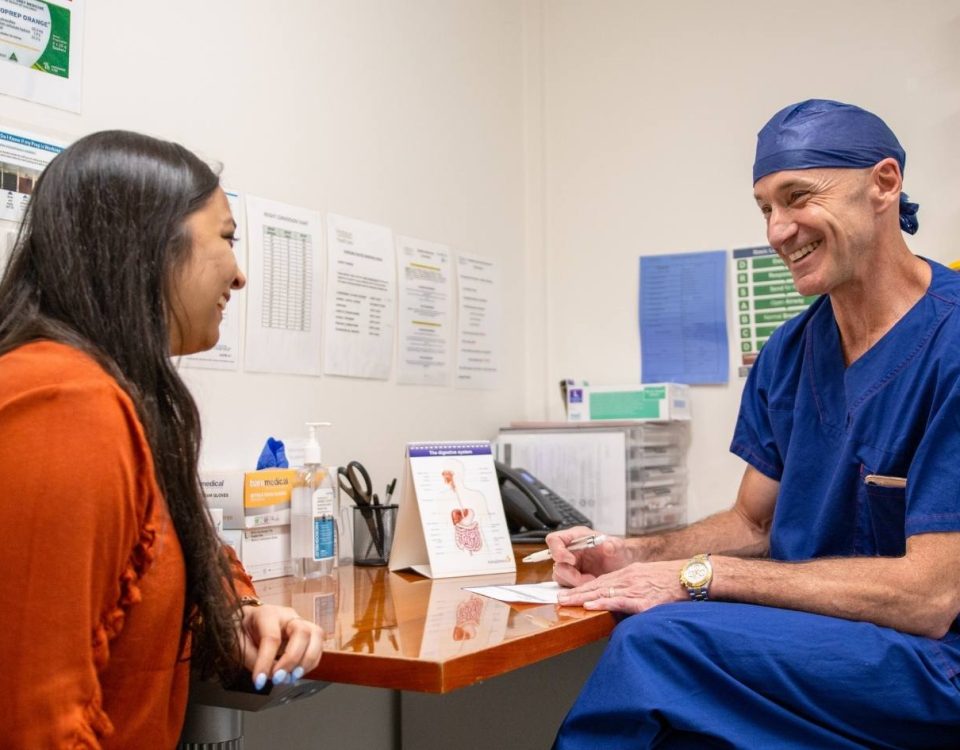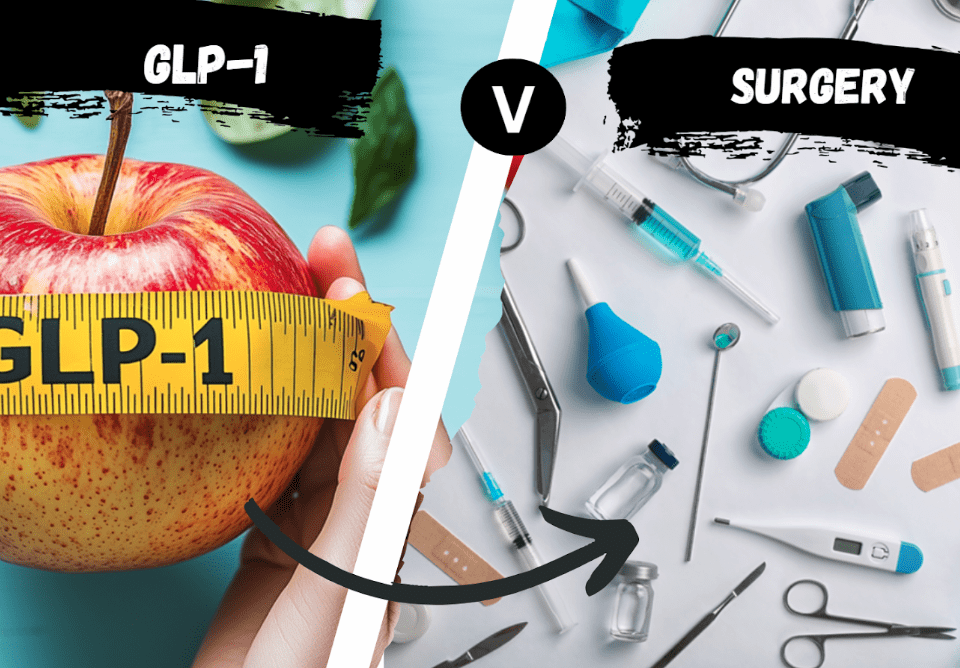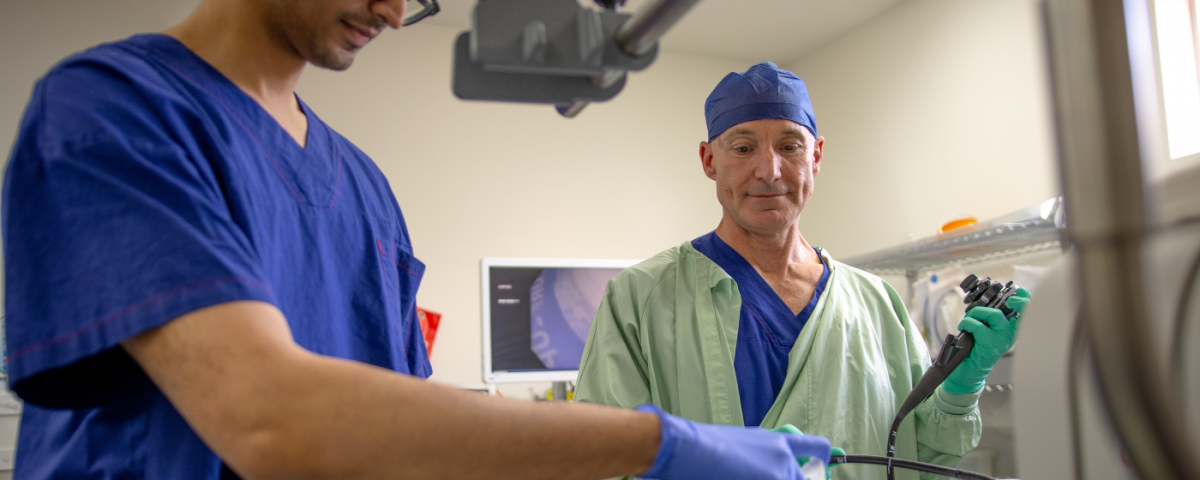
Dr. Jason Winnett threads carefully when it comes to intra-operative suturing. But who would have guessed that it was a love of sewing and high fashion that led him into the world of medicine? Here is a Q&A with one of Melbourne’s spiffiest bariatric surgeons.
Q: Why is suturing technique so important in bariatric and other surgeries?
“Suturing is a critical component of surgical practice to ensure tissue approximation, appropriate tension, and secure wound closure. Proper suturing techniques not only reduce infection risks and enhance haemostasis, but also increase the risk of dehiscence, necrosis, allergic reactions, and suture granuloma.
Just as a tailor meticulously sews a garment, the surgeon brings together the edges of an incision, uniting them with precision and care to ensure optimal healing.
Whether they use a figure-of-eight suture for vascular procedures, retention sutures for high-risk wounds, or purse-string sutures, which are placed around a circular wound and tightened, a reputable surgeon will be meticulous about suturing technique. It’s a huge responsibility. Just like fashion is a unique vision transforming cloth into a work of art, so does surgery instill patience, precision, and an unwavering commitment to patient care.”
Q: So how did your love of sewing drive you into surgery?
“I learnt to sew in my university years. As a public school kid growing up in the Dandenongs, there wasn’t a lot of money to go around.
School was pretty rough (my high school burnt down at one stage!), and I learned Taekwondo to defend myself.
I was one of the first kids in my school to go to university and study medicine. At first, I didn’t get the marks for direct admission into medicine, so I did science for two years and transferred after foregoing my place in dentistry.
When I started my medical degree, I would see many of the other students in wonderfully stylish clothes. I wanted to fit in, so I made clothes for myself and some close friends.
My mum was a fantastic dressmaker and was always sewing my sister’s dance costumes. I had access to an excellent sewing machine and overlocker and would see designer clothes in shop windows and replicate them with my own special twist. Upon completion, I would hand embroider my initials as a proud label (JDW).”

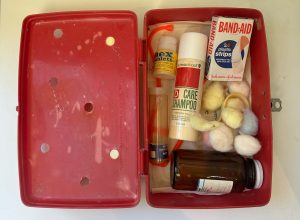
From the age of three, Dr Winnett wanted to be a doctor. This is the medical kit he made for himself at the age of 9.
Q: OK, good stitching helps outcomes when it comes to bariatric surgery – but what else can GPs do to help patients?
“As soon as a patient walks in the door, I always try to address their primary medical issue of concern first and avoid making the whole consult about weight.
Despite the fact most people in Australia are now overweight or obese, we are still living in an age of ‘fat discrimination,’ where the totality of the stigma often defines a severely obese person’s whole existence.
People at the high end of the obesity range often tell me they have felt embarrassed after people stared at them eating in a restaurant or checked out the contents of their trolley at the supermarket.
While fat discrimination is less common in the medical profession than it used to be, it does have a shameful past. Doctors are far more likely to advise CT scans, blood work, and other tests for non-obese patients compared with obese patients, according to an American Psychological Association report.
It also found that overweight patients were far less likely to have medical symptoms investigated than healthy weight patients, which led to significantly undiagnosed medical conditions (e.g., endocarditis, ischemic bowel disease, or lung carcinoma), indicating misdiagnosis or inadequate access to health care.
Even in 2023, an Australian study of 900 health students in 39 Australian universities found both explicit and implicit bias against obese patients.
The report in The Lancet found that weight bias exhibited by healthcare students may continue into their future practice, compromising the provision of care that people living with overweight or obesity receive.”
Q: So how can doctors help patients feel better about themselves?
“This research highlights the need to comprehensively examine the extent to which weight bias is present among healthcare students and the factors that may be associated with students’ weight bias.
Previous Australian of the Year and body positivity advocate Taryn Brumfitt recently said that weight management was too complex for a standard GP consultation and that weight bias remained the ‘last remaining legal form of discrimination.’
I agree a standard consultation is not long enough to cover weight issues on the back of another medical issue the patient may have come in for. I do believe, however, that more and more Australian GPs are sensitive and highly adept at having these discussions. My main concern for GPs is time. And my one tip would be that if the patient comes in for a short consult, encourage them to come back for a longer consult to deal with the issue more fulsomely.”
Addressing weight bias and effective management requires both clinical expertise and compassion. If you have questions or wish to discuss strategies for improving bariatric care, please contact our team at Winnett Specialist Group. Together, we can continue to provide the highest standard of care for our patients.
Mr Jason Winnett
Laparoscopic and Bariatric Surgeon
P (03) 9417 1555 admin@winnettspecialistgroup.com.au
www.winnettspecialistgroup.com.au
Queens Terrace, 382 Victoria Parade, East Melbourne 3002
References:
- RACGP Clinical Resources – national guide to a preventive health assessment for Aboriginal and Torres Strait Islander people.
- Explicit and implicit bias among health care students: a cross-sectional study of 39 Australian universities, The Lancet E-clinical Medicine, 2023.
- RACGP How should doctors discuss weight with their patients – GP news.
- Sun Herald, 2023 Weight management too complex for standard 15-minute GP consultations, Australian of the Year says

